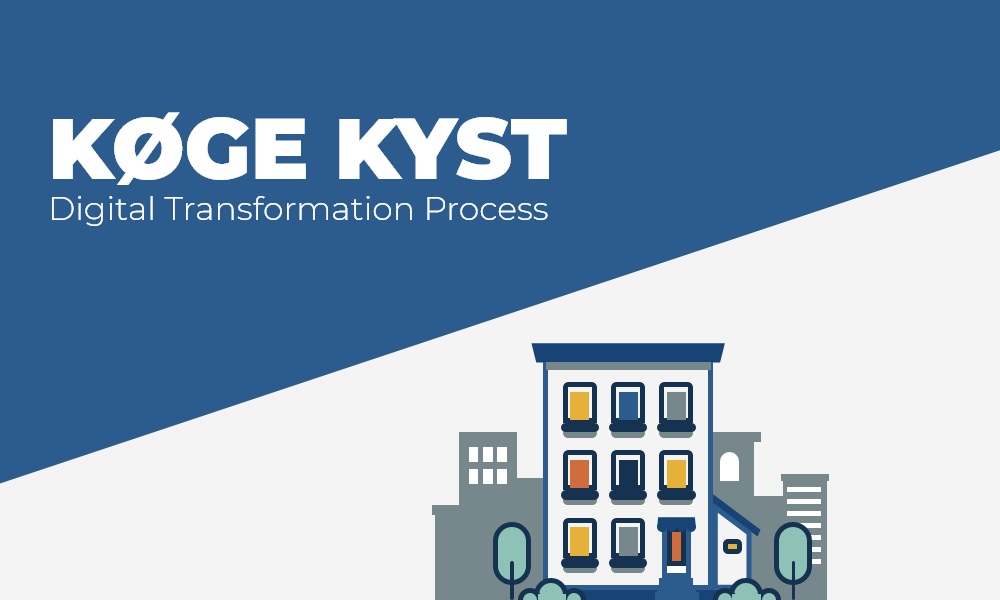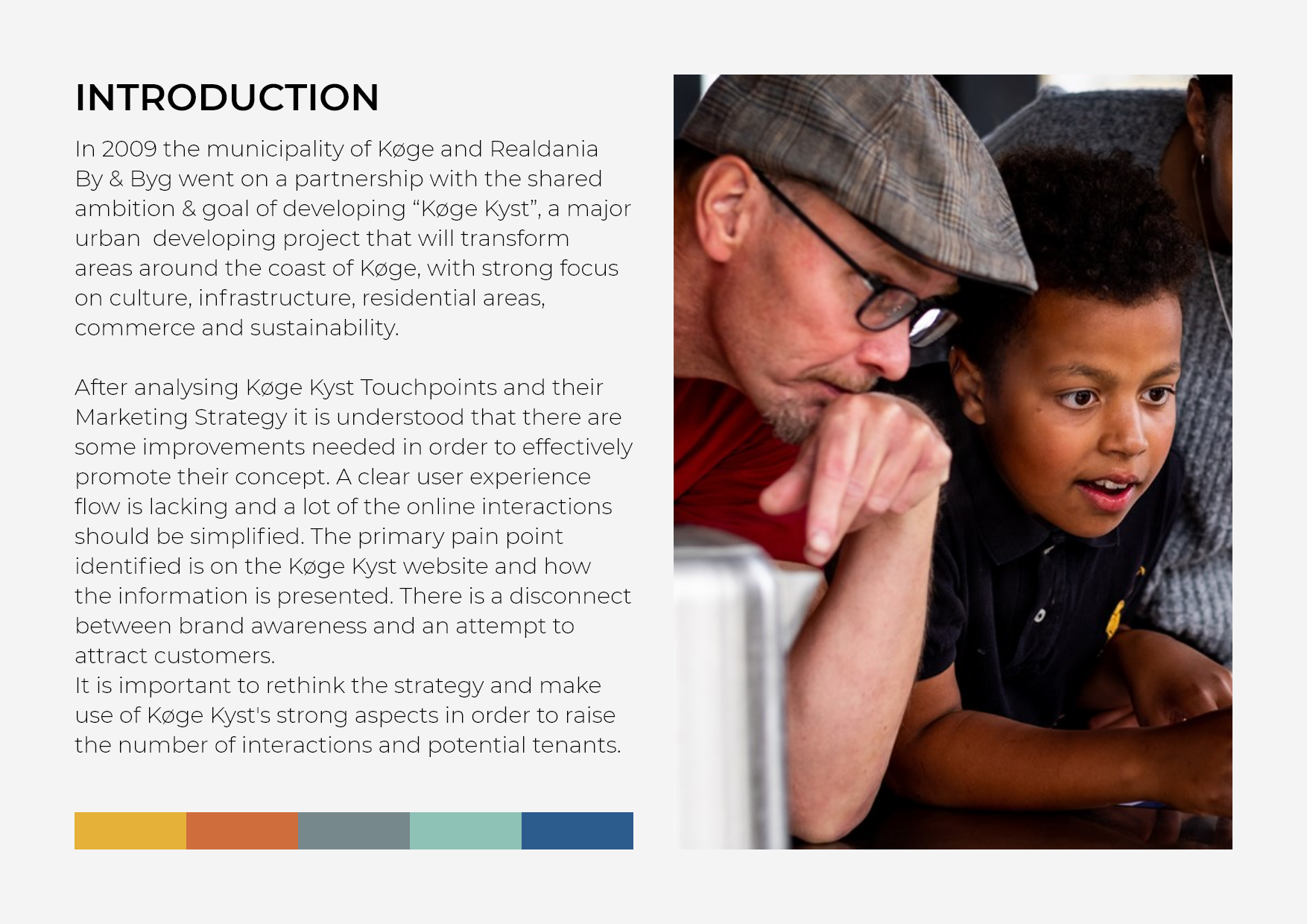Digital Transformation Processes
Client //
Zealand Academy of Business and Technology
Role //
Conceptualization and Design
Timeframe //
Jan 2021 - Feb 2021
Link //
Download White Book
Overview
During my study in Concept Development I had a project focused on Digital Transformation Processes. My team and I were tasked with using digitalization to create awareness of Køge Kyst and attract future inhabitants to the area.
Problem statement:
‘How can storytelling through videos be used to strengthen the overall awareness of Køge Kyst and attract future inhabitants?’
Target groups:
- Køge Kyst (Primary)
- Future inhabitants (Secondary)
Our concept revolved around the use of storytelling as a marketing tool, visualized through a variety of engaging visual content aimed to attract future inhabitants to Køge Kyst.

Introduction
In 2009 the municipality of Køge and Realdania By & Byg went on a partnership with the shared ambition & goal of developing “Køge Kyst”, a major urban developing project that would transform areas around the coast of Køge, with strong focus on culture, infrastructure, residential areas, commerce and sustainability.
After analyzing Køge Kyst’s touchpoints and marketing strategy it was understood that there were some improvements needed in order to effectively promote their concept. A clear user experience flow was lacking and a lot of the online interactions should be simplified. The primary pain point identified was on the Køge Kyst website and how the information was presented to users. In short, there was a disconnect between brand awareness and the attempt to attract customers.
The Concept
Storytelling is known for being a successful strategy to engage an audience. It builds relationships, makes people feel connected with the company's vision and starts picturing themselves part of it. Storytelling makes content more exciting and interactive while recreating your own version of a story someone else told already. The strategy was thus crafted so the storytelling could be shared through social media spreading, and establish interaction with a broader crowd.
The solution proposed was a series of video, infographic and social media content that used storytelling to strengthen the communication and customer engagement within Køge Kyst’s touch points.
The timeline of the intended customer journey would thus begin with engagement via video content on Køge Kyst’s website, and thereafter lead to more elaborate information through infographics. Social media channels would thereafter be used to follow up and remind customers about Køge Kyst, aimed at leading them to make a purchase.

Customer Journey Map
A customer journey map was created based on the current user experience with Køge Kyst in order to identify pain points throughout the touchpoints of the journey. These identified pain points were later addressed and solved through the conceptualization process of the project, which resulted in the creation of a future-state customer journey map. This future-state journey would focus on the ideal interaction and experience with Køge Kyst.

Service Blueprint
In order to make the future-state customer journey feasible, a service blueprint was created to address and structure the actions needed to ensure success for the customer journey. This blueprint primarily focused on the frontstage actions, backstage actions and support processes needed to enable success in the customer actions throughout the physical evidence of Køge Kyst’s products and service components.

Visual Components
To better communicate and visualize the information and arguments for implementing these initiatives into Køge Kyst’s marketing, data visualization was considered. An example of this was the use of info boxes that were designed to attract the eye and provide easily understood facts about why Køge Kyst should implement storytelling in their product.

White Book
A white book was made as a handbook on identified pain points for Køge Kyst and how to make these pains into gains. It was thus also used as an argumentation for how Køge Kyst could benefit from implementing the initiatives suggested by us. This was of course directed towards attracting the secondary target group, future inhabitants, and thus should the content be tailored towards this group.














